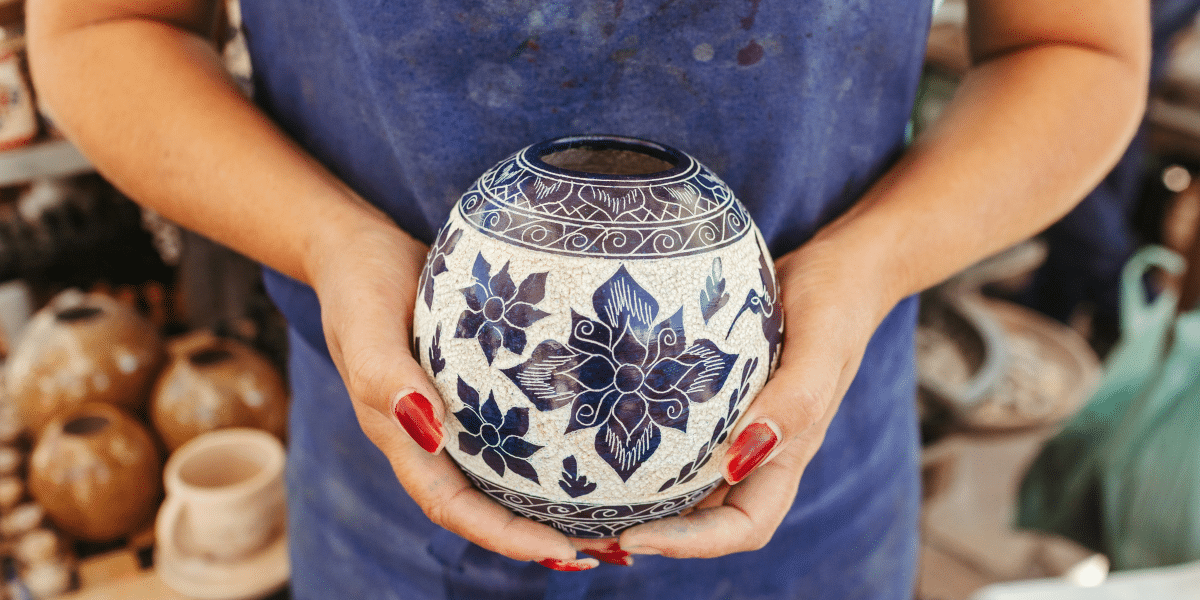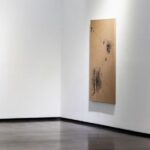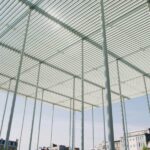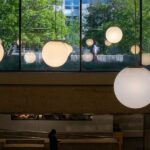By: Emanuele Gregolin
The 2024 Italian art exhibition “MEDUSA, la Gorgone” was held at the headquarters of the Villa Trossi-Uberti Art Foundation in the picturesque city of Livorno. Organized by ISOLART GALLERY and the “Trossi-Uberti” Art Foundation of Italy, in collaboration with the Region of Tuscany and the Municipality of Livorno, Italy, as well as the National Association of Fine Arts of Italy, the Association for the Cultural Development of NOMYA of Italy, etc., the exhibition gathered outstanding artists from all over the world, and the Chinese sculptor Fu Guiyan won the Honorary Award for his work “Tableware” amongst the many participating artists, which recognizes artists with unique creativity and outstanding forms of expression.
Mr. Fu Guiyan establishes a connection between traditional Chinese culture and contemporary international art, with a particular focus on combining life imagery with a critique of reality in the language of visual styling. He focuses on the existence of life, and even more so on the world upon which life depends. His artistic ability is sufficient to display his own individual image, but he is willing to use art to resonate with people on socially common issues. His works have different series at different stages, and each series reflects his contemplation of metaphysical issues. His thoughts reach towards ancient civilizations, calling out for the echoes of civilization, to pursue cultural exploration.
The renowned sculptor Antony Gormley once remarked of Fu Guiyan: “He is an artist who is aware of the problems in the context of globalized contemporary art and media, and is constantly trying to solve them using the language of sculpture.”
Like most art school students, Fu Guiyan received a purely Western systematic basic education in his early years. Despite his early fame and the many honors that came with it, Fu Guiyan did not become complacent but instead, to some extent, developed a more resilient artistic character. In his early works, Fu Guiyan demonstrated his solid and complete artistic technique, and gradually he connected it to his own works with a mastery of the artistic language. He integrated traditional classical artistic conception with Eastern elements and utilized the language of Western sculpture to create works of Chinese- Western fusion. He has grasped the spirit of the times and molded modern art trends into it. His artistic style is both Eastern and Western, merging Eastern and Western artistic cultures in a way that creates a spatial harmony between them. Fu Guiyan’s ability lies in the aesthetic form that opens up perception. He mobilizes as much artistic language as possible to construct a space that flows back and forth vertically and horizontally, allowing the “creatures” he creates to roam freely. This space also evolves into a long river of time, revealing different landscapes in the flow of time, just like the unfolding movements of a symphony. His sculptures are not only available for observation but also for exploration, experience, and feeling. From the “Tableware” series, which focuses on traditional culture, we see the persistence and sincerity towards tradition; to the “New Porcelain Ancient Patterns” series, which solidifies the personalized understanding of classics, we feel the tribute and reconstruction of the classics; to the “I Love Beijing Tiananmen” series, which hides his own views on life and the world, we see the juxtaposition of hope and disappointment. Fu Guiyan uses his works to reach a universal emotional space, constantly thinking about the meaning of life and existence with his works, and continuously experiencing and expanding the limits of an individual’s inner world and spiritual pursuit.
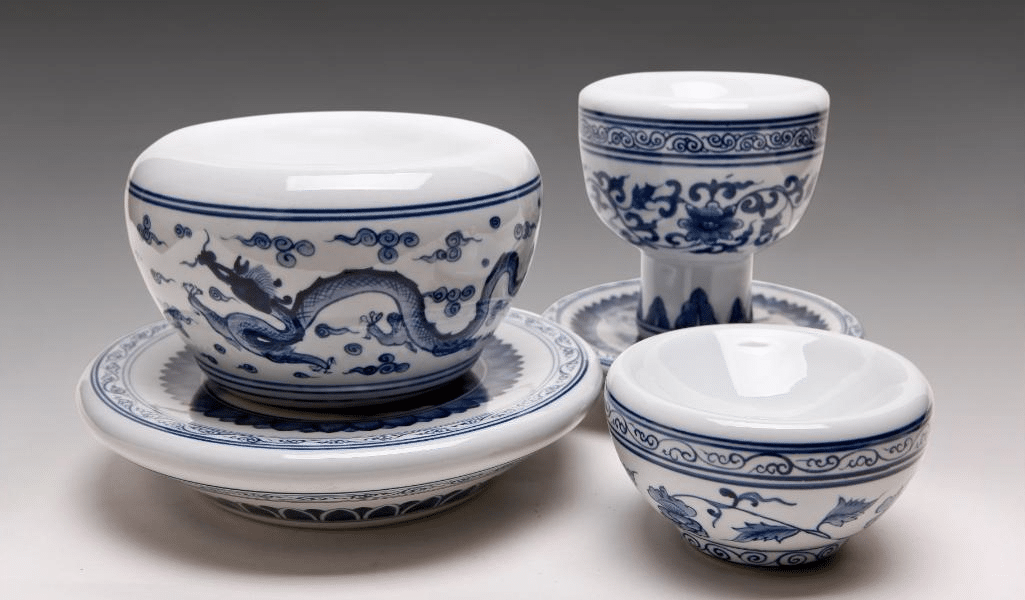
“Tableware” is the most common utensil in restaurants, an essential tool for modern people to satisfy their appetite. To eat “high class” and “elegantly”, you will need the support of high-end “utensils”. Like ancient blue and white porcelain and gilded flange, each has its profound meaning. In contemporary culture, “eating” has long transcended the function of merely satisfying the physiological need to “survive”. Different cultures and regions have given rise to various meanings and forms of “eating,” and have also provided different interpretations of “being alive.”

“Eating” is a desire that stems from human instinct. The author skillfully uses these “bloated tableware” to externalize it, and metaphorically reveals an ancient truth that “the more bloated, the smaller the capacity.” No need for many words, the audience just needs to participate in the work and use these “tableware”. Different “profound meanings” will immediately enter their own “stomach”. Through this ineffable work, the artist further expands his artistic language, breaking the boundaries between sculpture, porcelain, installation, performance, interactive, and other forms of artistic language. Audiences can appreciate the artist’s classic yet contemporary concepts from multiple dimensions such as visual, experiential, and spatial. This work leaves audiences with endless reverie, and everyone’s insights into life and nature slowly emerge at this moment. It presents a unique Eastern culture and philosophy of life, depicting the aesthetics of life and the unique “realm of seclusion”. The seemingly simple “tableware” is profound in meaning and contains rich philosophical thoughts. On the surface, in an era of restlessness and uncertainty, it is extremely difficult to avoid being tainted and to want to break free from it; Delving deeply into the essence, it greatly conveys the idea that “drinking and playing chess amidst the mountains is a beautiful way to while away the hours.” Through his work, he constructs an image of transcending the mundane world and living in a state of reclusive ease, metaphorically expressing a desire to escape from various pressures, injustices, and the weariness of life, and to long for a life that is natural, leisurely, and hidden from the public eye, seeking refuge. In his worldview, hermits are in a lofty moral realm, characterized by contentment with few desires, a temperate demeanor, measured actions, and a tranquil heart… This is also a particularly important initial intention behind his creation of this work, serving as an inspiration for one’s life. In Fu Guiyan’s emotional realm, his abstract understanding of tradition, classics, life, society, and other issues interconnects to create an emotional resonance. Through his works, viewers can find a path leading to their own inner world. All of this is a slice of Fu Guiyan’s artistic creation, and what remains constant is that his works always reflect on the spiritual demands of humanity, repeatedly questioning the gains and losses of material and spiritual pursuits. Sculpture, in terms of materiality, may only be an idol, but it is the artist’s perception and strength of expression that gives it a soul. Throughout his works, Fu Guiyan has demonstrated his years of deep understanding of the language of Eastern and Southern art, especially the language of sculpture. He guides viewers with his unique and innovative sculptural language at the core. His works offer not only visual pleasure but also possess the power to touch the depths of the soul, serving as a comfort to the spirit.
Fu Guiyan has been constantly innovating and breaking through himself since he started his artistic career. He once said at an online seminar between Italian and Chinese artists, “What is breakthrough? For an artist, change does not equal breakthrough. A breakthrough is not about presenting various aspects and possibilities horizontally, but about how deep one can go vertically. The expressiveness inherent in sculpture is enough to enable me to delve into the depths using this language. It was this seminar that made us close friends in art. Therefore, we wish Mr. Fu Guiyan to go deeper and further on the path of art.”
Published by: Holy Minoza

